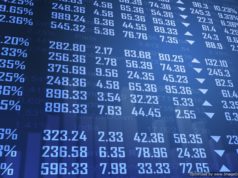
What is Margin?
• In finance, margin refers to collateral that a holder of a financial instrument must deposit to cover a portion or all of the credit risk of their broker or exchange (the counterparty doing business). The risk of margin can arise if the holder has partaken in any of the following activities:
o The individual has borrowed cash from the counterparty to invest in a financial instrument
o The individual enacted a short sale transaction of a financial instrument
o The individual has entered into a derivative contract
• Margin or collateral, can be exchanged in the form of securities or cash; regardless of form, it is always deposited into a margin account.
Buying on Margin:
• Margin buying is the act of buying securities with cash borrowed from a broker. This transaction is enacted by using other securities as collateral. This situation has the effect of magnifying any profits or losses made on the securities, because the securities serve as collateral for the loan (margin).
• The net value of the transaction is initially equal to the amount of cash used by the borrower; this difference must stay above the minimum margin requirement. The purpose of the minimum margin requirement is to protect the broker or counterparty against a fall in the value of the securities to the point where the investor can not cover the margin figure.
Minimum Margin Requirements Explained:
• There are numerous types of margin requirements; for instance, a current liquidating margin refers to the value of a securities position if the position were liquidated at the current price. If the holder possesses a short on the underlying security, this is the money needed to buy the security back; if the investor is long, it is the money raised by selling it.
• The maintenance margin is a daily payment of profits and losses; this type of margin does not act as collateral. For example, in the case of futures, which are marked-to-market daily, the current price is compared to the previous day’s price; the difference is then paid to or debited from holders by the futures exchange. In this relationship, the exchange acts as the central counterparty to all contracts—the number of long contracts always equals the number of short contracts.
• And lastly, additional margin is required to cover a potential dip in the value of a position on the following trading day.
• The minimum margin requirement is the sum of the aforementioned types of margin requirements. The margin deposited in the margin account must be at least equal to this minimum for the investor to engage in a trade.


































